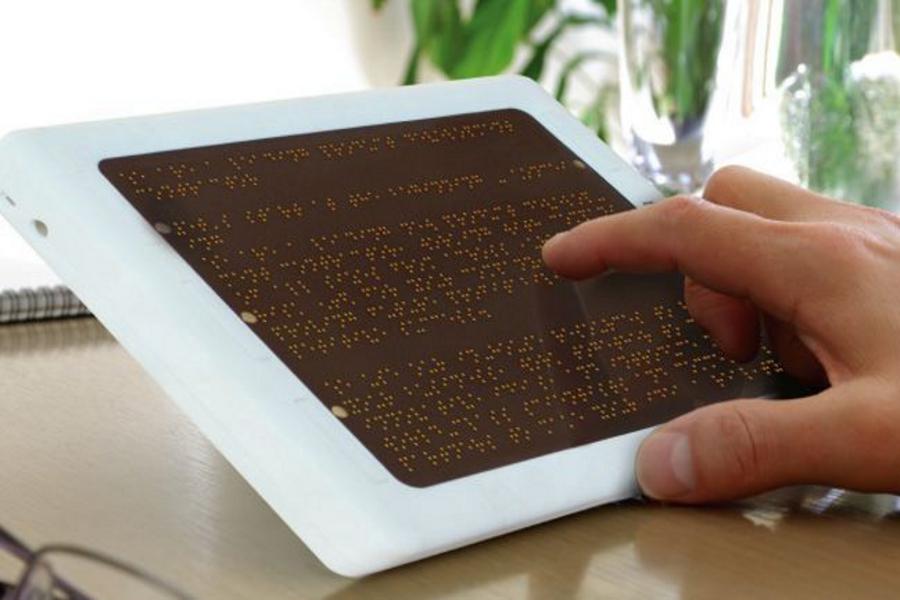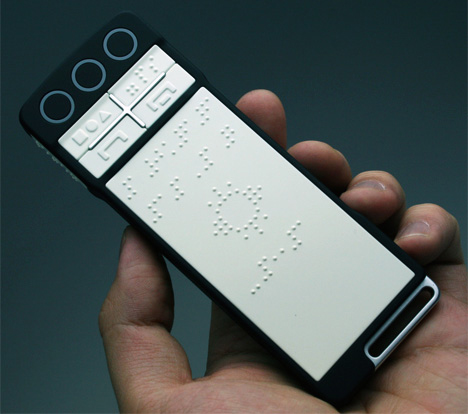Screen Readers for the Blind: Essential Tools for Digital Access
Screen Readers for the Blind: Essential Tools for Digital Access
Blog Article
Enhancing Lives With Advanced Assistive Instruments for the Blind
The combination of innovative assistive gadgets for the blind is changing just how people experience their environments and communicate with their communities. What does this evolution mean for the future of assistive innovation and its function in equipping individuals?
Overview of Assistive Tools
Assistive devices for the blind incorporate a diverse range of modern technologies and devices developed to enhance freedom and enhance the high quality of life for people with aesthetic disabilities. These gadgets accommodate numerous demands, from navigation and mobility to interaction and day-to-day task administration.
Among the primary classifications of assistive gadgets consists of mobility help, such as white walking canes and guide canines, which help users browse their environments securely. Digital traveling help, geared up with sensors and audio responses, also play a significant duty in flexibility enhancement.
Furthermore, devices that help with day-to-day living activities, such as adaptive kitchen tools, Braille tags, and talking watches, empower individuals to execute jobs individually. Communication help, including screen visitors and Braille displays, promote access to details and make it possible for individuals to engage efficiently with the digital globe.
Moreover, low-tech remedies like multiplying glasses and large-print materials stay essential for numerous customers. Jointly, these assistive devices serve not only as useful tools but likewise as vital enablers of freedom, fostering better involvement in a world that commonly prioritizes sighted experiences. Their assimilation right into day-to-day live is important for advertising inclusivity and boosting general well-being for those with aesthetic problems.
Cutting-edge Technologies in operation
Advancement in innovation has actually substantially changed the landscape of tools readily available for individuals with aesthetic impairments. Among the most remarkable innovations are smart glasses integrated with augmented truth, which offer real-time navigation assistance and things recognition. These devices take advantage of advanced cameras and fabricated intelligence to deliver acoustic cues, improving the user's spatial awareness and autonomy.
Additionally, mobile applications have become effective resources, making it possible for customers to determine money, reviewed message aloud, and browse strange atmospheres with verbal guidelines. Devices such as Braille displays and refreshable Braille gadgets proceed to develop, offering smooth connectivity with mobile phones and computer systems, thereby boosting interaction and access to information.
Wearable modern technology, consisting of smartwatches outfitted with voice-activated attributes, even more equips users by facilitating fast access to notices and notifies without requiring aesthetic engagement. Responsive maps and 3D printing are additionally gaining traction, providing substantial representations of areas that help in alignment and movement training.
Collectively, these cutting-edge technologies not only improve the every day lives of visually impaired individuals yet likewise foster better freedom, inclusivity, and engagement with the broader area, consequently improving perceptions of ease of access. (Smart glasses for the visually impaired)
Individual Stories of Empowerment
Empowerment typically arises from individual experiences that highlight the transformative influence of modern technology on people with aesthetic impairments. Take, for example, the story of Sarah, a young musician that regained her passion for paint through the usage of a clever walking cane equipped with obstacle discovery. This device not only facilitated her flexibility but instilled a newly found self-confidence, enabling her to browse public areas independently and pursue her creative endeavors.

These narratives underscore the extensive effects that progressed assistive gadgets can carry day-to-day live. By making it possible for people to get over obstacles, modern technology promotes a feeling of freedom and self-worth. Such empowerment stories serve as a testimony to the capacity of advancement, illustrating just how the right tools can considerably boost quality of life and open doors to new opportunities for those with visual problems.
Benefits of Advanced Solutions
The combination of cutting-edge innovation right into assistive tools substantially changes everyday experiences for those affected by vision loss. Voice-activated assistive devices. Gadgets such as clever canes geared up with sensing units, navigating apps, and wearable modern technology are designed to offer real-time responses, boosting spatial understanding and lowering the risks associated with movement.
Moreover, advanced assistive technologies foster social inclusion by facilitating interaction and communication. Voice-activated devices and applications enable people to accessibility info and engage with their surroundings independently, damaging barriers that formerly prevented their engagement in educational, expert, and social settings.
On top of that, the modification and versatility of these solutions satisfy the diverse requirements of individuals, consequently enhancing their general lifestyle. Boosted performance, such as item recognition and text-to-speech abilities, empowers individuals with visual impairments to execute tasks that they may have once found testing. Ultimately, progressed assistive innovations not great post to read just boost self-reliance and security but also promote self-respect and self-worth, allowing customers to lead satisfying lives.
Future Fads in Assistive Technology
As technology continues to develop, the landscape of assistive devices for the blind is positioned for remarkable improvements that will further improve access and independence. Arising trends in assistive innovation show a shift toward raised assimilation of fabricated knowledge (AI) and maker learning, enabling devices to adapt to specific user needs in real-time. These innovations are expected to promote more instinctive navigating systems that can determine obstacles and supply audio comments, considerably boosting exterior flexibility.
Additionally, the growth of wearable tech, such as wise glasses geared up with enhanced reality, will allow individuals to receive contextual details regarding their environments, therefore improving their spatial recognition. Moreover, innovations in haptic innovation guarantee to develop responsive responses tools, permitting individuals to regard info via touch, enhancing learning and communication with their environment.
Telecommunication advances are also paving the method for remote aid solutions, where trained professionals can offer assistance by means of video clip telephone calls, making certain assistance is conveniently available. As these fads unravel, the future of assistive devices for the blind will undoubtedly promote higher autonomy, empowering people to browse their world with confidence and simplicity.

Verdict
The combination of innovative assistive gadgets for the blind stands for a significant improvement in promoting self-reliance and boosting quality of life. By utilizing cutting-edge innovations, these devices encourage users to navigate their settings with higher self-confidence and freedom. As the field remains to progress, recurring r & d will likely produce also a lot more sophisticated services, better transforming the lived experiences of people with aesthetic disabilities and advertising a higher feeling of addition browse around here within society.
The combination of innovative assistive devices for the blind is transforming just how individuals experience their environments and communicate with their communities. The combination of cutting-edge innovation right into assistive devices dramatically changes daily experiences for those affected by vision loss.As technology proceeds to progress, the landscape of assistive devices for the blind is poised for impressive improvements that will additionally enhance availability and freedom. Emerging patterns in assistive technology show a shift towards enhanced assimilation of man-made knowledge (AI) and device learning, making it possible for tools to adapt to about his individual user needs in real-time.The combination of sophisticated assistive tools for the blind represents a significant advancement in promoting independence and enhancing top quality of life.
Report this page